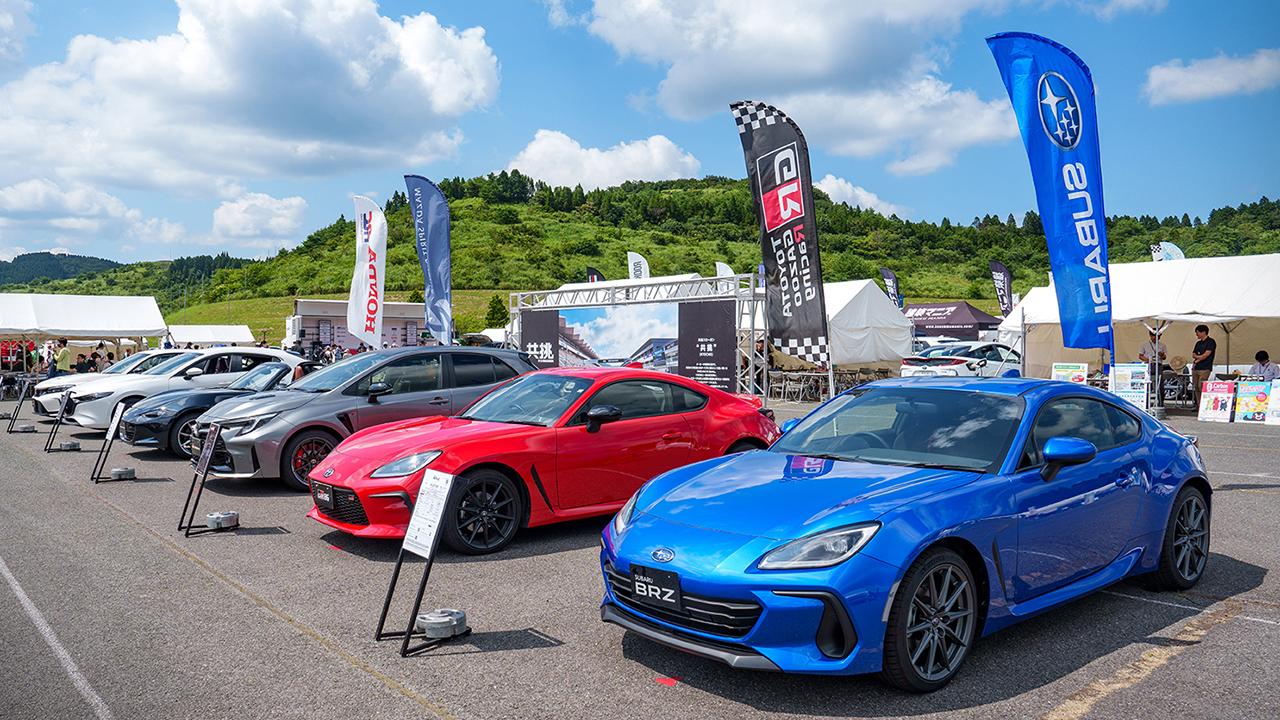
Round 4 took the Super Taikyu Series to Autopolis in Oita Prefecture, where Toyota was joined by Kyushu-based partners working together to create a carbon-neutral society.

Round 4 of the 2023 ENEOS Super Taikyu Series Supported by Bridgestone was held at Autopolis on July 29-30.
In Kyushu, Super Taikyu is boosting Toyota’s efforts to build partnerships around hydrogen. We looked into the carbon-neutral initiatives being talked about at Autopolis.
Industry and academia team up for carbon neutrality
During the race, Autopolis featured displays of various hydrogen-related initiatives currently underway, mainly around Kyushu. Mitsumasa Yamagata is president of Toyota’s Hydrogen Factory, a specialized unit launched in July to oversee everything from development to the business side of fuel cells and other hydrogen products. He spoke about these hydrogen initiatives at a roundtable discussion.
President Yamagata
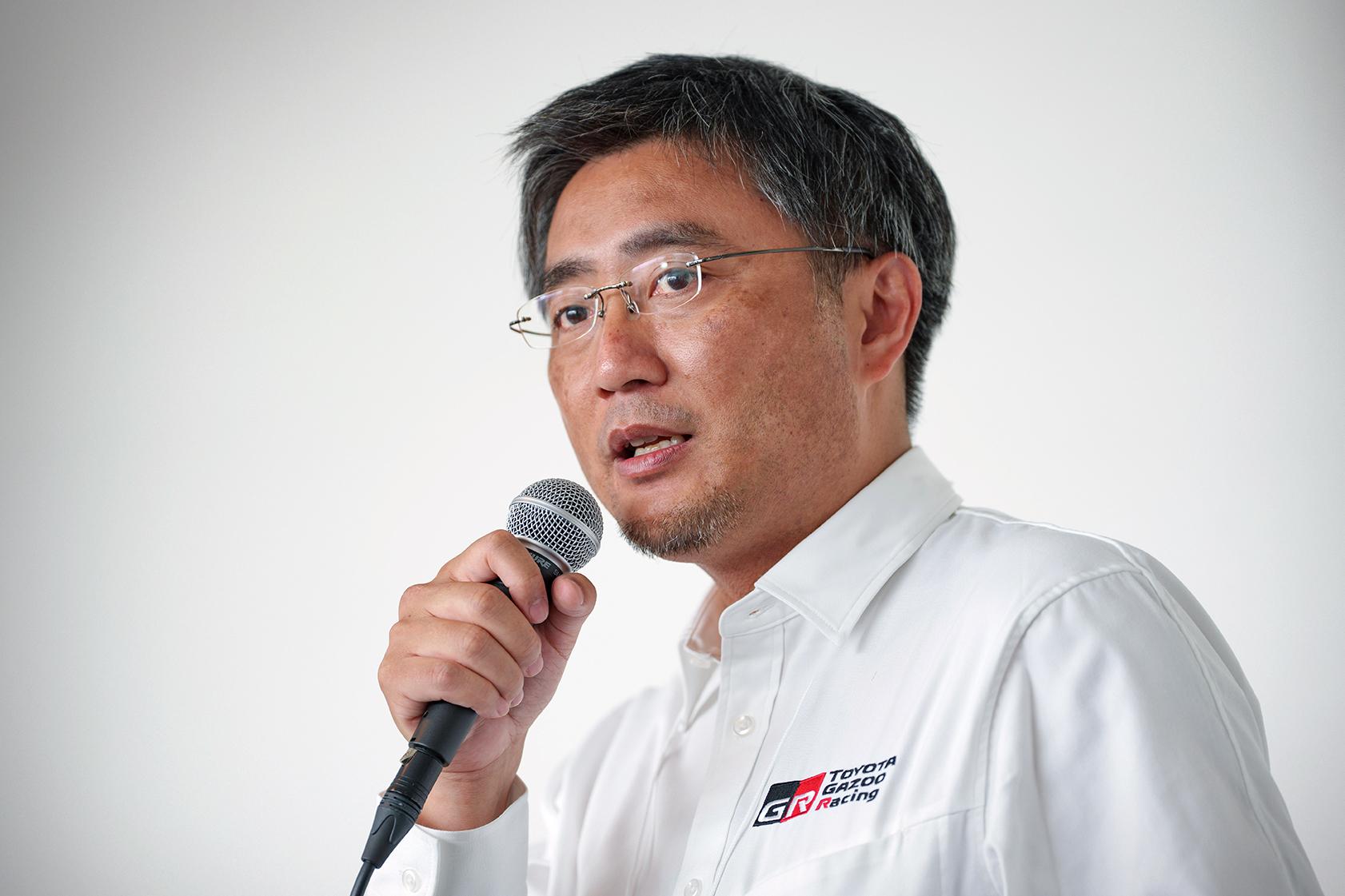
Our efforts have received enthusiastic support in the Kyushu region, which we consider a partner moving in the same direction.
Having launched our Hydrogen Factory in July, I came here to discuss these initiatives directly.
In our conversations at the venue, I discovered that Kyushu University is earnestly committed to hydrogen and making incredible technological progress, from which we have also learned a great deal.
While such collaborations between industry and academia also exist in the Tohoku region or Yamanashi Prefecture, I see this as one of Kyushu’s strengths.
Our relationship here is extensive, like with car production at Toyota Motor Kyushu . I believe this is a region that shares our vision.
Kyushu leads growth in hydrogen FCEVs
Within Kyushu, fuel cell electric vehicles (FCEVs) are used as delivery trucks bringing meals to elementary and junior high schools in Fukuoka City, and as mobile clinics run by the Japanese Red Cross Kumamoto Hospital .
In addition, Executive Vice President Hiroki Nakajima unveiled another new initiative powered by hydrogen.
Vice President Nakajima
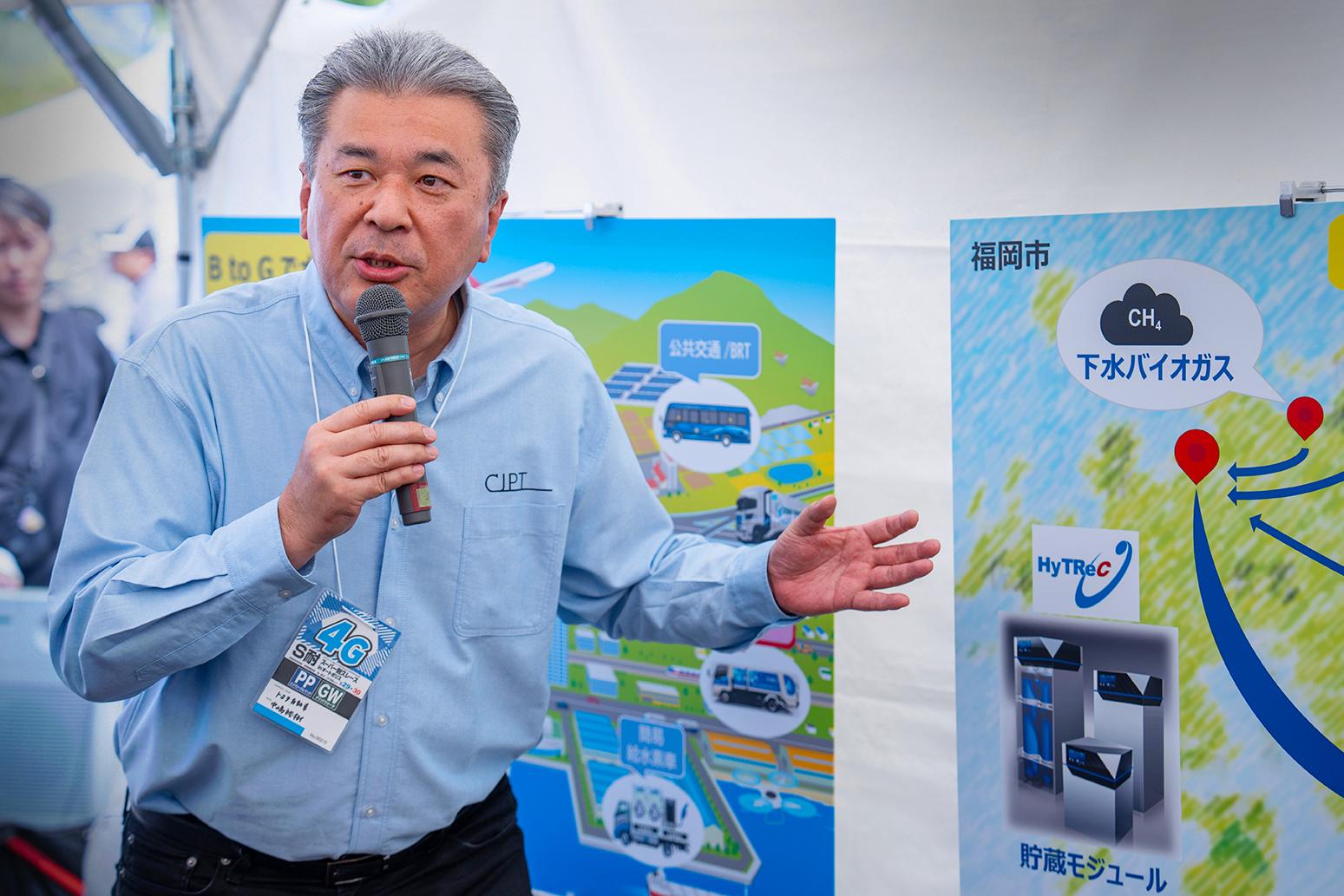
After flooding several years ago, the railroad connecting the town of Soeda in Fukuoka and Hita City in Oita became difficult to maintain. This prompted a plan by JR Kyushu and the Fukuoka government to replace the trains with BRT*.
*BRT: Bus Rapid Transit. A public transportation system that achieves greater speed, reliability, and capacity than conventional buses through a combination of features, including vehicle priority, dedicated roads, and bus lanes.

Seizing the opportunity, we suggested that they try using FCEV Coasters for this route.
I personally got behind the wheel to conduct final checks on the vehicle and road conditions to make sure it was safe to drive.
We’ve been involved in the project from the stage of removing the tracks and building roads. Together, we’ve discussed ways to ensure safety and sufficient width for the Coasters.

We even put the old train tunnels to good use. This is a mountainous area with large differences in elevation, which means constantly winding roads if traveling by car. But since we’re making use of former train tracks, the grades are fixed, and we have the advantage of running in straight lines.
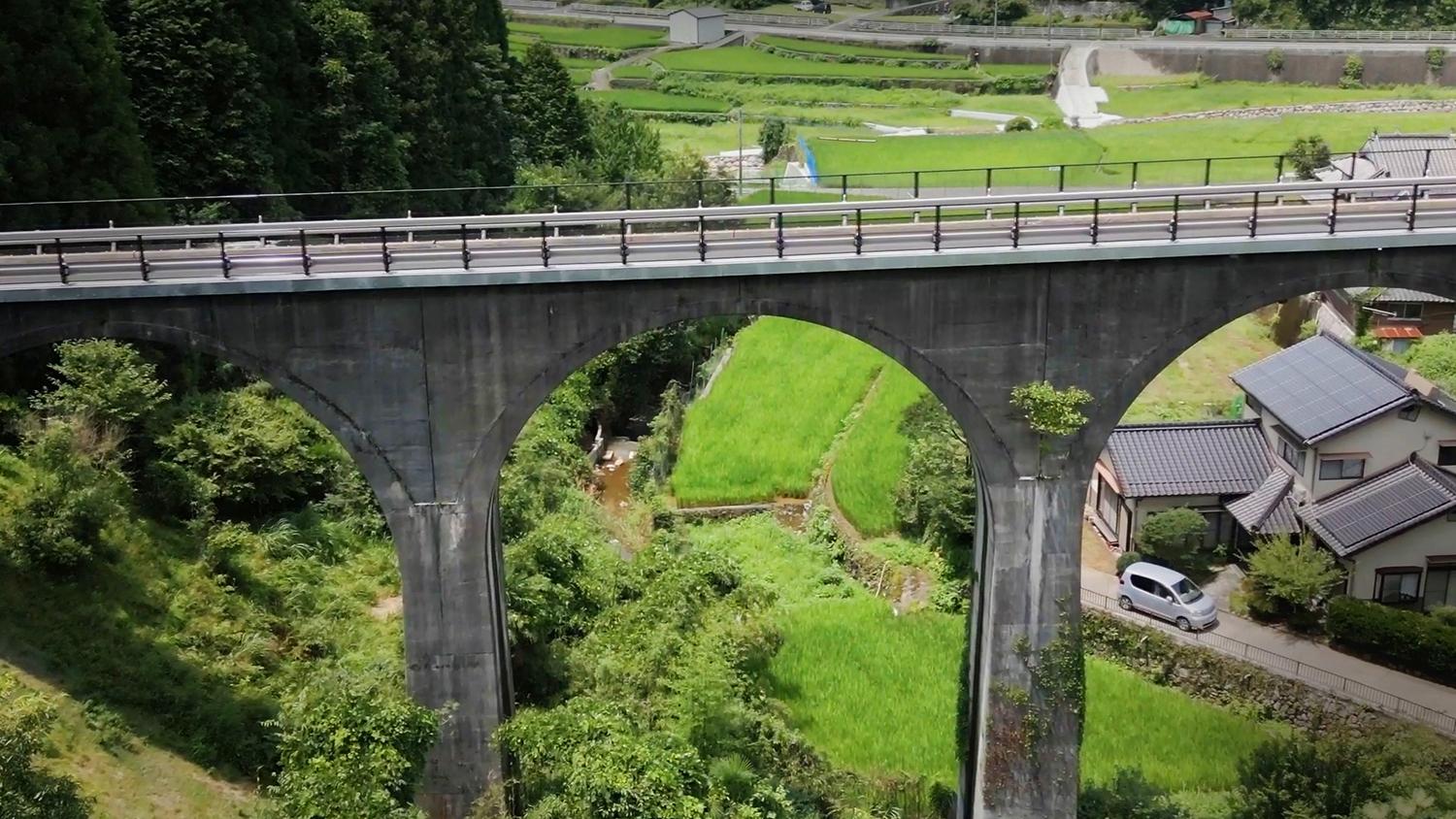
We feel this will make the vehicles safe and convenient for drivers and passengers alike.
We have also begun working on an FCEV ambulance, although we’re still just in the planning phase. We are partnering with companies in Fukuoka, as well as Tokyo and Fukushima, with a view to potentially making them available by year-end.
At the same time, in a hydrogen society with many FCEVs on the road, there’s a possibility that cars may run out of fuel when stuck in traffic, for example. To provide support in such situations, we are cooperating with JAF (Japan Automobile Federation ) in exploring the potential for vehicles that can directly supply hydrogen.
B to G drives hydrogen use
Vice President Nakajima
In this way, we are turning to FCEVs for the vehicles that sustain society. A key point is that these vehicles operate in city centers. They can be refueled by setting up a hydrogen station at the prefectural offices or city hall, for example, which can then also be used for official vehicles, such as the Mirai or our soon-to-be-released FCEV Crown.
We are exploring the potential of combining such passenger cars and commercial vehicles as a B to G (Business to Government) offering for cities or prefectures, and plan to start with Fukuoka Prefecture and Fukuoka City.

If this is successful, we hope to expand to other prefectures and cities.
We have already been approached by multiple prefectural and city governments, and we’ll continue striving to create a hydrogen society by putting cars on the road.
When it comes to commercial vehicles, particularly those with custom outfitting, there are now questions about how to deal with their basic principles.
BEVs (electric vehicles) have a limited range while operating the equipment mounted on commercial vehicles consumes battery energy needed for driving. In certain situations, we believe custom FCEVs may have ample potential.
FCEV garbage trucks offer more than carbon reductions
The event also featured a hydrogen-powered FCEV packer (garbage truck), displayed publicly for the first time. At a media roundtable, Chief Engineer Hirofumi Ota of the CV Company, which handles Toyota’s commercial vehicles, outlined the truck’s features.
Chief Engineer Ota, CV Company
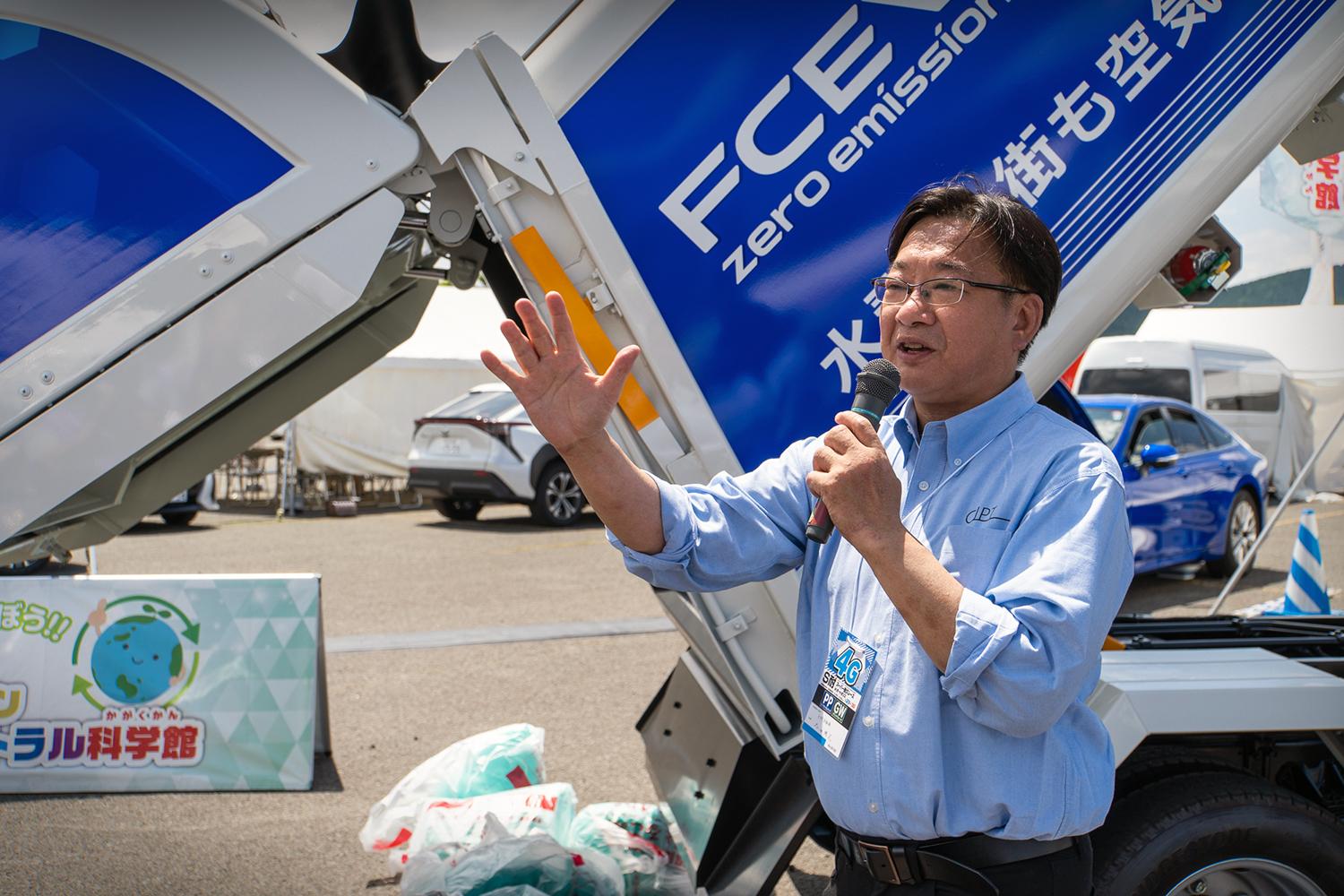
What we’ve built here is a hydrogen FCEV packer, or garbage truck. Everything is powered by hydrogen energy. It runs on hydrogen and collects garbage with hydrogen energy.
We designed a vehicle that combines both aspects—driving and operating on hydrogen energy—in a single package.
We want to clean our cities and the air with hydrogen. It is also quiet. Structurally, we fitted one of our FCEV trucks with garbage collection equipment.
It is essentially the same as the packer trucks used by custom outfitters, only powered entirely by electricity.
Currently in our cities, garbage is collected by diesel-powered trucks. In such vehicles, everything is driven by the engine, which is noisy and means the work cannot be carried out quietly.
Fukuoka City collects garbage at night. In other cities the times vary, from morning collections in Tokyo to evenings in Hiroshima.
As such, it’s important that garbage can be collected quietly. Whether picking up garbage in front of houses or driving around the city, we want these trucks to do more than reduce CO2 emissions—by operating quietly, we hope they will blend into the urban environment.
If we were to make everything new from the ground up, the vehicles would be harder to popularize. By utilizing current systems as much as possible, we’re trying to ensure that these trucks can access the existing sites where garbage is collected.
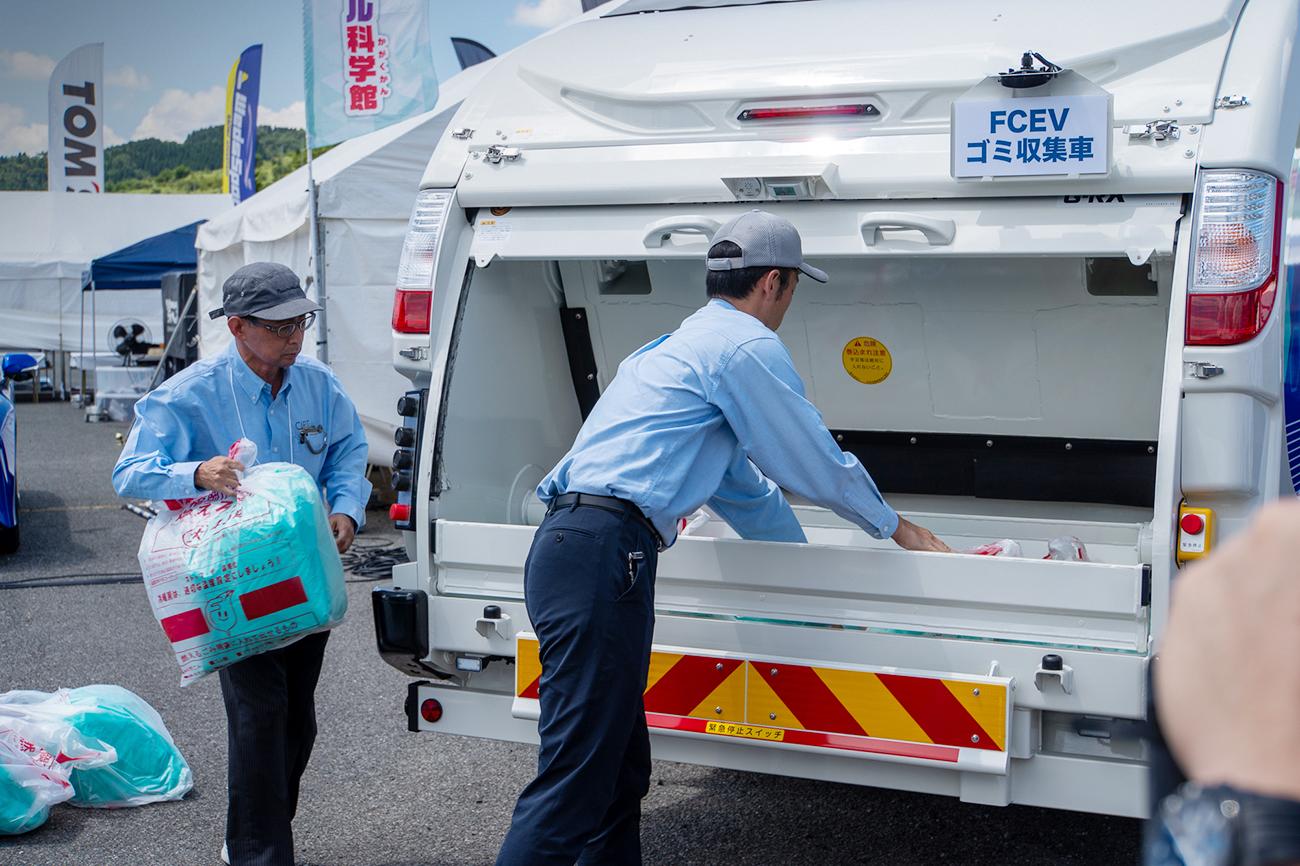
To aid widespread adoption, we believe it’s important for automakers to work step by step with the community, which in this case means the custom equipment outfitters.
If you observe the actual garbage trucks around town, some operators want more space for carrying things like brooms and spare tires. We want to make sure that we accommodate these different ways of using the vehicles.
The hydrogen FCEV packer truck shares the same base as light-duty FC trucks already on the market. Ota explained the logic behind this.
Chief Engineer Ota, CV Company
The hydrogen tank position and other aspects match our light-duty hydrogen FC trucks. Standardizing allows us to make the vehicle’s bare chassis on the same line and then add the top onto that once complete.
Building a one-off vehicle becomes expensive, so we try to use shared parts wherever possible.
We’ve received inquiries from many local governments. We want to pursue carbon neutrality across the country, and these first six months will be about gathering data.
Trials will begin this fiscal year with one FCEV packer truck in Fukuoka City. Running this FCEV packer as a garbage truck will allow Toyota to test how the battery and energy consumption are affected by frequent stop-start operations or unloading garbage at dumping sites.
Vice President Nakajima
Efforts to electrify packer trucks are also underway overseas. We are starting by creating a working vehicle with which we can demonstrate usability to local governments and overseas customers.
Chief Engineer Ota, CV Company
I believe that creating an environment for using hydrogen in cities and building hydrogen stations are key steps in growing the hydrogen society.
The B to G approach is about establishing a steady circulation of hydrogen in cities. Alongside the use of heavy-duty FC trucks for trunk line logistics connecting major cities, we are looking to produce hydrogen and one by one increase the number of cities that use it.

